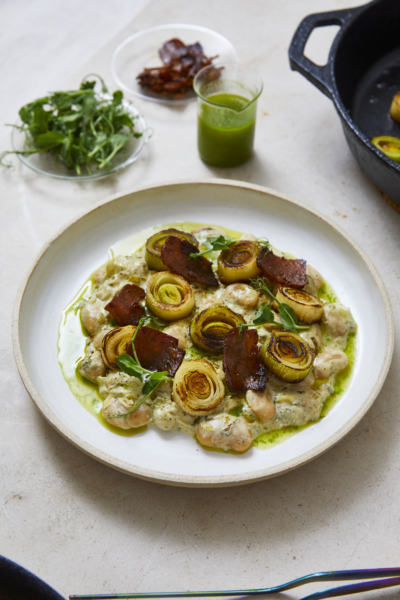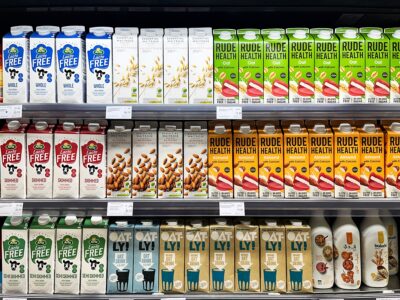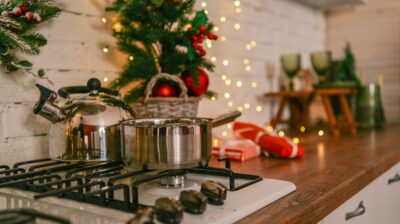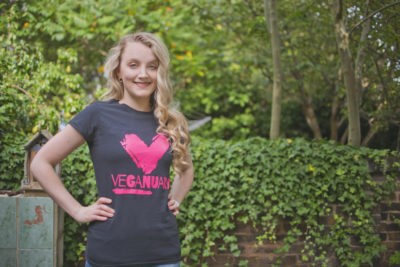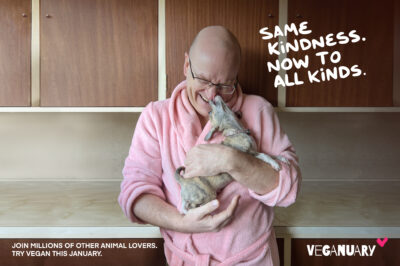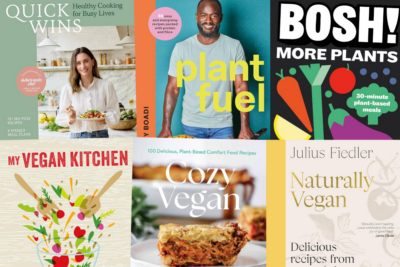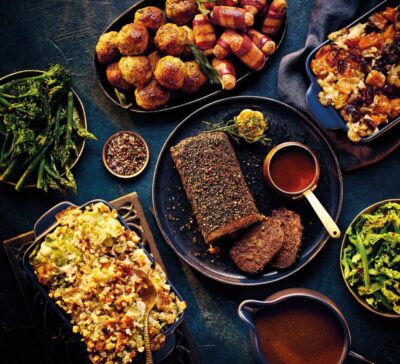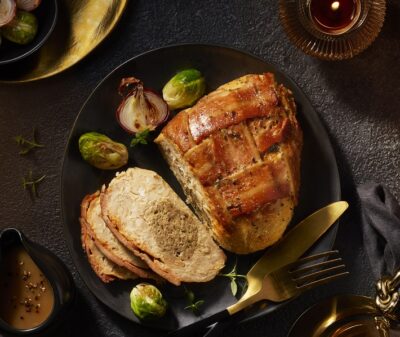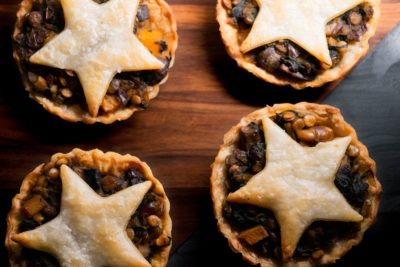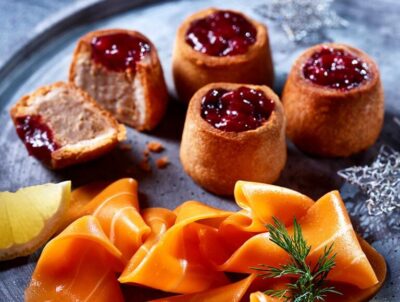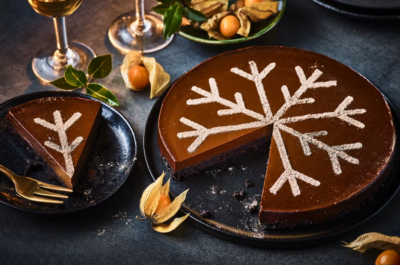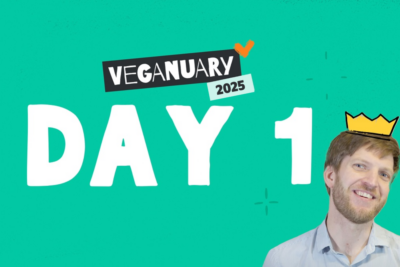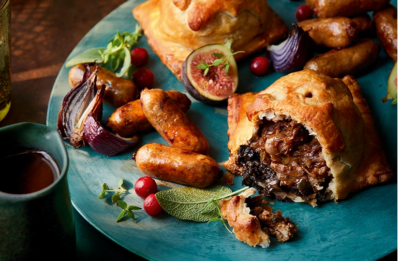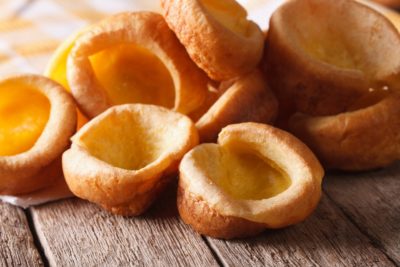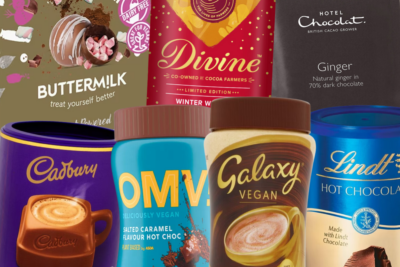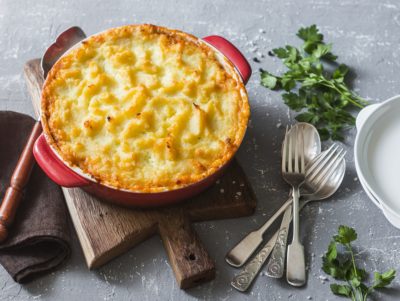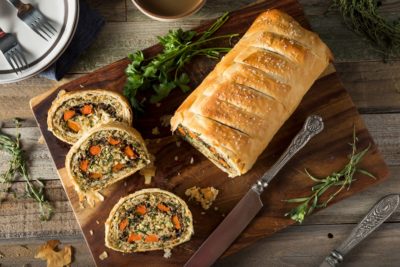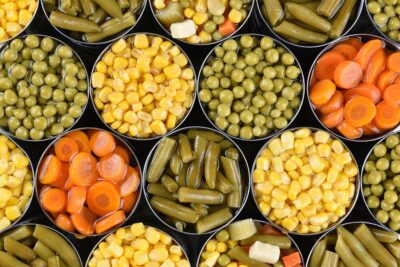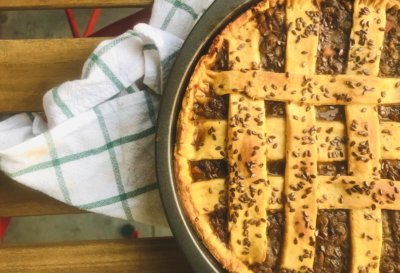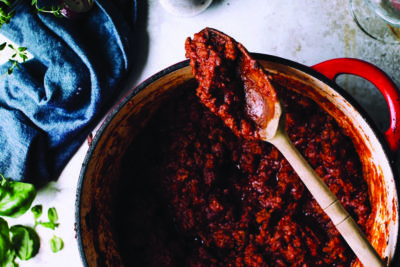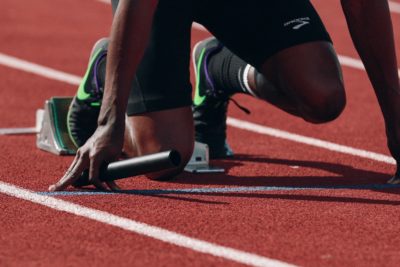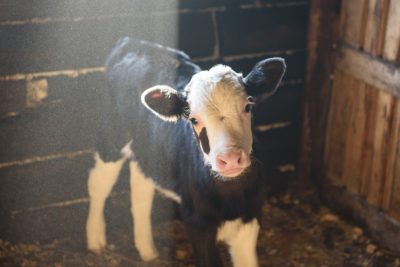Every piece of meat on the supermarket shelf, every pint of milk, and every carton of eggs is only there because a mother’s reproductive system was exploited for profit.
But, as we push our trolleys down the aisles, thinking about what to cook for dinner, we don’t see the mother – penned or caged, exhausted and broken – we just see ingredients.
So, for Mother’s Day, we want to tell the stories of three incredible mothers who suffered the loss of their young and much more besides, and yet somehow against the odds survived.
Jo
Jo is a cow and a mother who had been kept on a farm in the US, a chain around her neck, tied to a pole, and with nothing to sleep on but a concrete floor.
Despite being impregnated and giving birth five times, Jo had never got to care for her young. Shortly after birth, they were all taken from her to stop them drinking her milk.
Like all mammals, Jo doesn’t produce milk because someone wants it for their coffee; she produces it for her calf, and that is why cows kept for their milk are repeatedly inseminated.
To the dairy industry, the calf is little more than a by-product and the young are killed unless a profit can be made from them in other ways – by selling them for veal, for example, or exploiting them for their own milk.
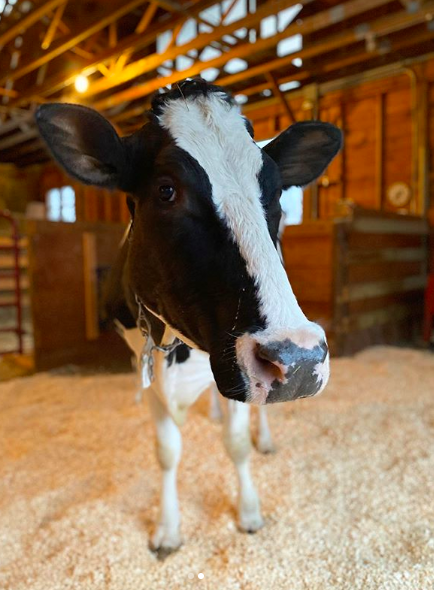
As for Jo, a few weeks after the loss of each calf, she was made pregnant again. Being pregnant and milked at the same time takes a heavy toll on the body, and it is common for cows to break down by the age of six.
Jo was breaking down, too and had suffered mastitis – a painful infection of the udders that is so common in the dairy industry. It was clear that Jo was nearing the end of her profitable life and would be joining all the others who were lame, infertile or whose milk production had declined, on the truck to the slaughterhouse.
But unlike all those other mothers, Jo’s life was saved. She was rescued by Woodstock Farm Sanctuary in New York state, and will stay with them, safe and loved, as one of a herd that she will not be parted from.
Dotty
Dotty is a pig and was to be kept alive only so long as she kept having large litters. She had already given birth to – and lost – four sets of piglets, all of whom were taken away, fattened, slaughtered and eaten.
Perhaps after being impregnated for the fifth time, Dotty had given up hope of ever getting to keep her young. Perhaps she thought this time would be different.
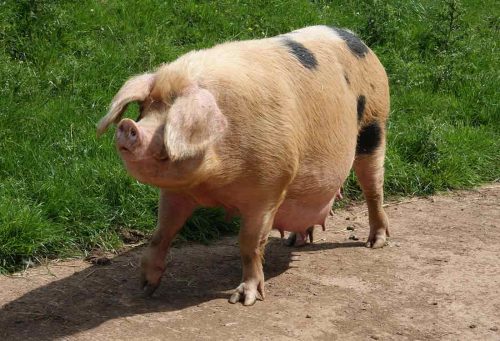
On most farms, sows are inseminated artificially, during which they are restrained in a small metal crate. In some countries, sows will spend their entire pregnancy in these tiny gestation crates, unable to move or even turn around.
In the UK, these are banned, but farrowing crates are permitted and there is little difference, except the length of time that a sow can be held inside one. Mothers give birth in these cages, separated from their young by bars that allow them to suckle her, but prevent her from nurturing them.
This would almost certainly have been Dotty’s last litter, and their birth would have signaled the end of her life. There is no retirement, no happy ending for these mothers.
Dotty would have gone to slaughter like all the others, except that this farmer suddenly decided to leave the business. In stepped campaign group Viva! and rescue centre Dean Farm Trust, and Dotty – the last pig on the farm – was spared.
Shortly after arriving at the Welsh sanctuary, Dotty gave birth to her five piglets, and this time she got to keep them.
Ellie
Ellie is a sheep who had been used for breeding, and like Dotty, she had not been allowed to spend long with her lambs – just long enough to suckle them – before they were taken away.

Because we tend to see sheep in fields, we think of them as living a natural life.
But if sheep bred naturally, lambs would be born throughout spring, and farmers want plump ‘spring lamb’ already on the supermarket shelves by then – even if this means some perishing in the dead of winter.
And, since it is more convenient for the whole flock to give birth at the same time, sheep are ‘fitted’ with hormone-rich vaginal sponges that bring them into oestrous early and synchronize their births. Increasingly, ewes are being inseminated surgically.
Ellie had been nothing more than a hobby for a farmer. She was there to produce a few lambs that he could take and sell, but he soon got bored with Ellie and her four flock mates, and decided to send them to slaughter, too.
Thankfully, a rescue centre in Dorset called Fleecehaven offered to help, and Ellie and her friends arrived at the sanctuary on the very same day that they had originally been booked to die.
Ellie will never know her lambs or what happened to them and, unsurprisingly after what she had been through, she remains distrustful of people. Despite everything, she is one of the luckiest sheep in the world. She survived.
Survivors’ Tales
Jo, Dotty and Ellie are rarities. The vast majority of mothers don’t make it out of farms alive.
We are so grateful to every person who rescues and cares for animals like them, and gives them love, peace and dignity after all they have suffered, and for sharing their stories so others may understand something of their lives.
There are millions of animals inside farms right now whose stories will never be told, among them turkeys, chickens, ducks, geese and goats.
Every one of them had a mother from whom they were taken, and whose life was only worth something while their reproductive systems could be profitably exploited.
If these stories resonated with you, why not try vegan for a month? Sign up for our free email series and you’ll receive tips, recipes and support to help save animals like Jo, Dotty and Ellie.

